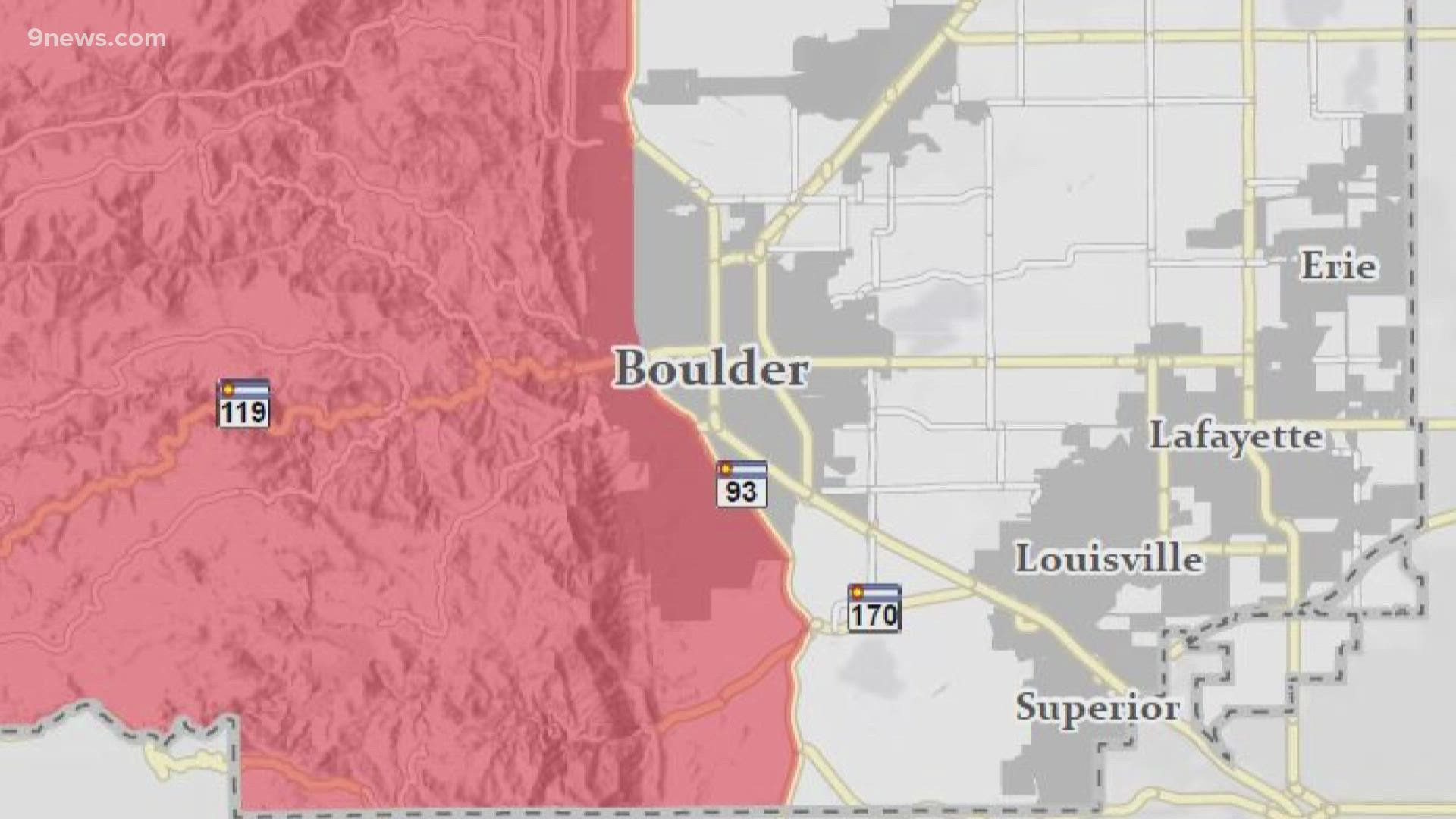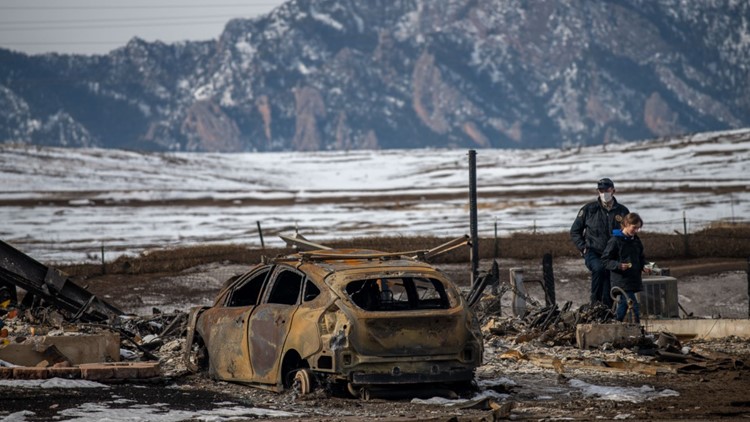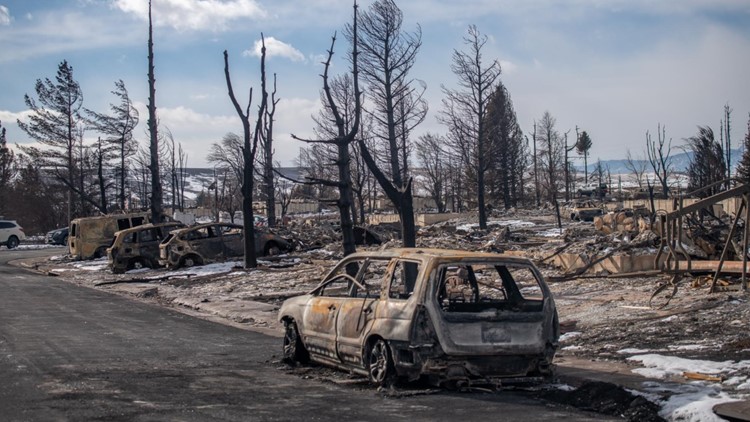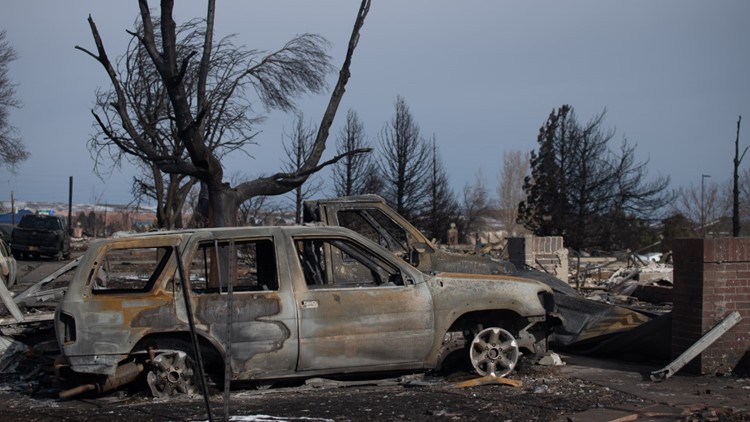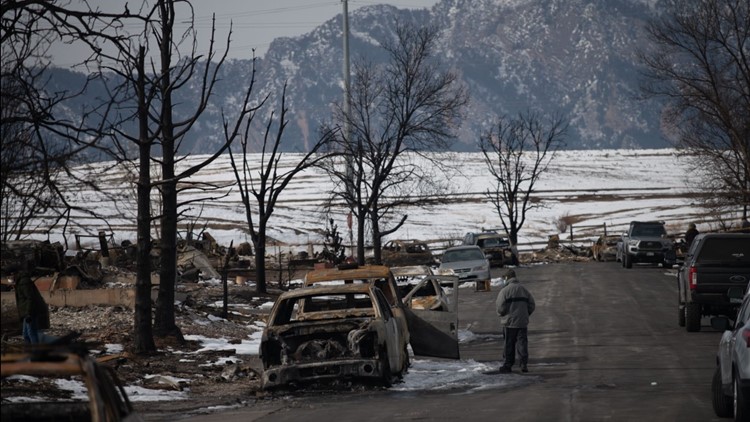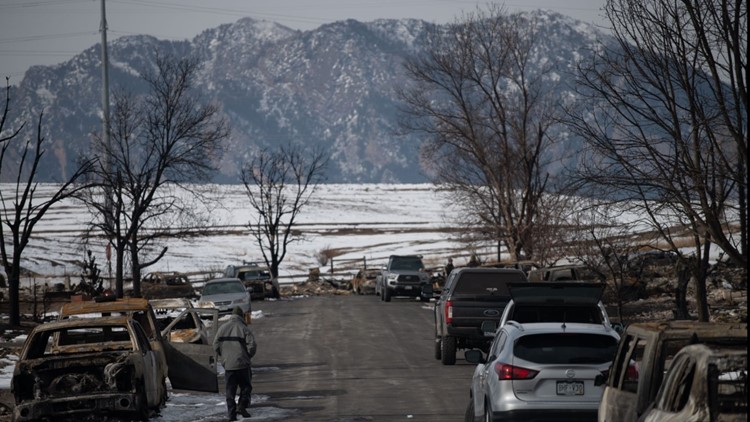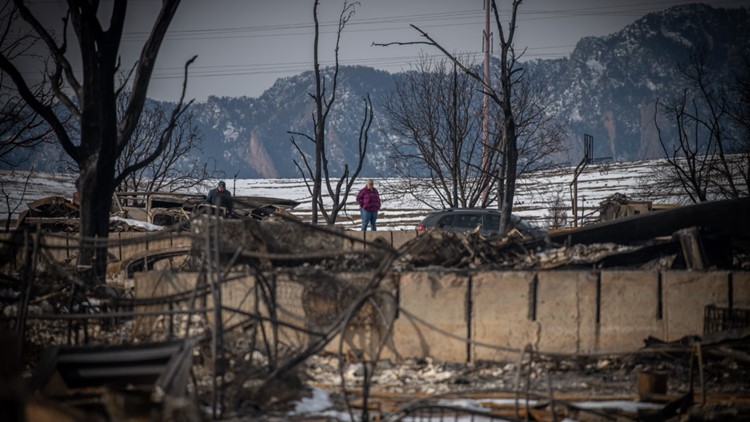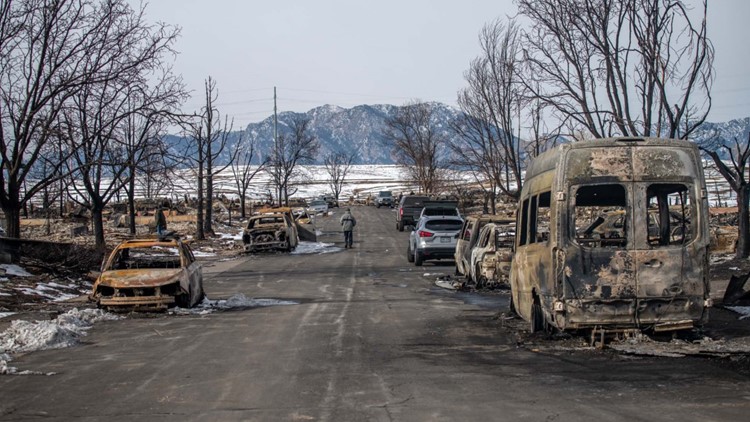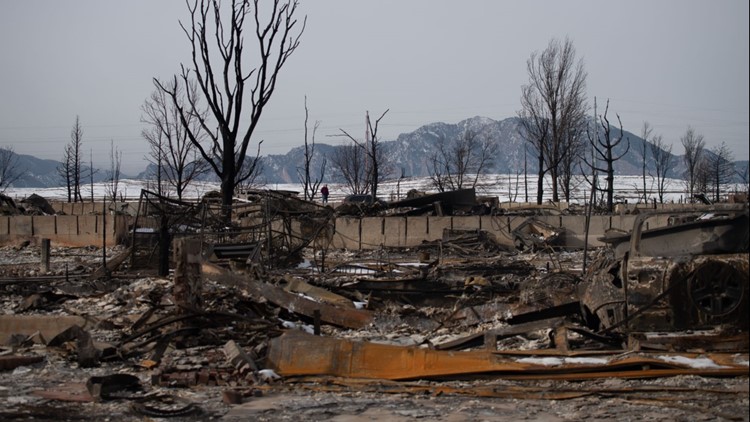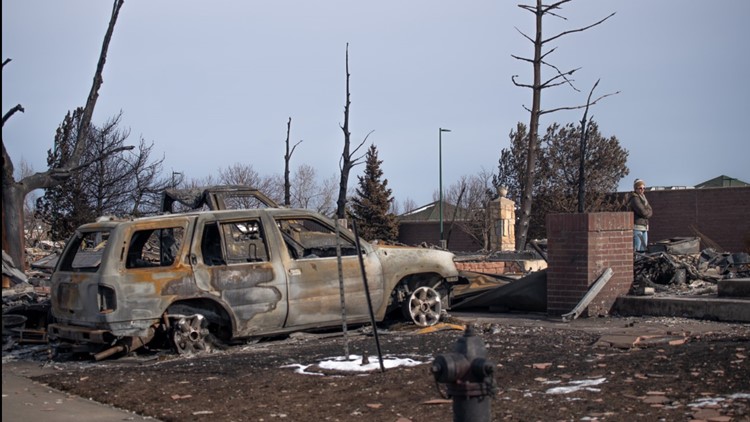BOULDER COUNTY, Colo. — Fire bans are meant to prevent catastrophes.
In the case of the Marshall Fire, would a fire ban have made a difference?
There was a fire ban in place for part of Boulder County when the Marshall Fire happened on Dec. 30. It covered the western part of Boulder County. Residents on the eastern side of unincorporated Boulder County could burn with a permit.
The boundary separating east from west was Highway 93/Highway 36 (North Foothills Highway).
What makes burning just east of Highway 93 any different than just west of Highway 93?
"Historically in Boulder, we use the Highway 93 and the North Foothills Highway here as the dividing line," said Seth McKinney, Fire Management Officer for the Boulder County Sheriff's Office. "For the most part, up until the Marshall Fire, fire danger was all up there."
RELATED: Boulder County was approved to use cell phone alert system in 2019, but never finished setting it up
The western half of Boulder County is forested and encompasses the foothills. The eastern half is made up of the plains.
"Our biggest concern is really the foothills and the mountain area," said McKinney.
From Nov. 30 until Jan. 11, Boulder County Sheriff Joe Pelle had enacted fire restrictions for western Boulder County, west of Highway 93.
"We implement fire restrictions because of high fire danger, and in the past that has mostly been focused towards the mountain and foothill areas where fire danger has the highest risk," said McKinney.
When open burning is allowed, residents must get a permit. And burning is pretty much limited to home mitigation.
"Cut-down vegetation, organic material of certain types," said McKinney. Under no circumstances are you allowed to burn trash, so even treated lumber, OSB board, that kind of stuff, not allowed to burn that."
Sagamore neighborhood after Marshall Fire
On Dec. 24, Clare Tone called Boulder County's non-emergency line to report a fire at the Twelve Tribes property near Highway 93 and Highway 170. That is the property that the Sheriff's Office had a search warrant to investigate after the Marshall Fire.
When fire crews arrived, they noted that the homeowner was "burning rubbish" and "would be burning railroad ties for the next few hours." The fire crews went back into service after notating that the homeowner had a front end loader and a water source for control measures.
RELATED: Marshall Fire investigation: Prior controlled burns documented at religious sect’s property
Trash and railroad ties should never have been set on fire, even with that property on the east side of Highway 93 and not under fire restrictions.
"Railroad ties would be considered under treated lumber," said McKinney.
That is true no matter what county, but each county gets to decide when and how it restricts open burning.
"On the agricultural side of things, we have farmers that typically burn out irrigation ditches, their ag fields, a number of things to help them do the work that they need to do in a good, safe responsible manner," said McKinney. "Fire makes a great tool, and for my job, it makes a great land management tool."
Cities and municipalities have their own restrictions, so just because you live in a portion of a county that is not under a fire ban, does not mean you can burn where you live.
"We only control restrictions for unincorporated parts of the counties, and a lot of area to the east of the highway is incorporated; cities," said McKinney. "I think we need to change our thinking a little bit and make sure that we're looking at fire risks for fires like we had on the Marshall Fire."
When Boulder County enacts fire restrictions, it uses levels.
Level 1 Restrictions prohibit:
- All open burning
- Most campfires
- Warming fires
- Slash pile burning
- Fireworks
- Model rockets
- Blasting
- Welding Outdoors
- Trash (illegal at all times)
Under Level 1 in Boulder County, you can still use liquid fuel stoves, gas stoves, charcoal grills on private property and have campfires on private land and in U.S. Forest Service campgrounds.
"Our stage one ban primarily impacts public lands. The intent is to, kind of, regulate people trying to go up into the national forest and pull over on the side of a dirt road and have a campfire. The intent is really to regulate recreational campfires and people leaving them unattended," said McKinney.
Under Level 2 Restrictions in Boulder County, everything in Level 1 is still prohibited, along with all campfires and recreational shooting.
"Stage 2 restrictions impact both public and private property. In Boulder County, our fire restrictions also include shooting restrictions," said McKinney. "As we do stage 2 restrictions, it starts to get a little tricky when we start telling people they can't shoot a firearm on their private property, but again, the intent is to manage that fire risk, that fire danger."
So why is the county sheriff responsible for enacting fire restrictions? State statute, that's why. Colorado Revised Statute names the county sheriff as the county fire warden.

